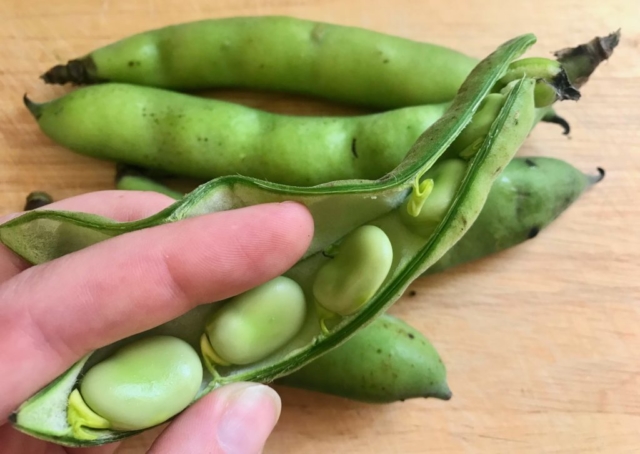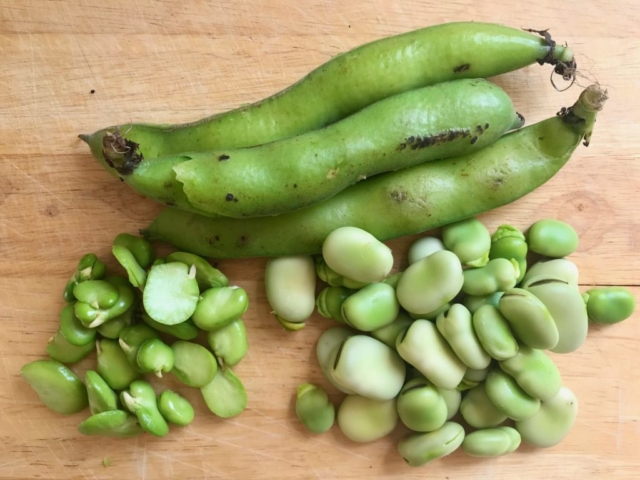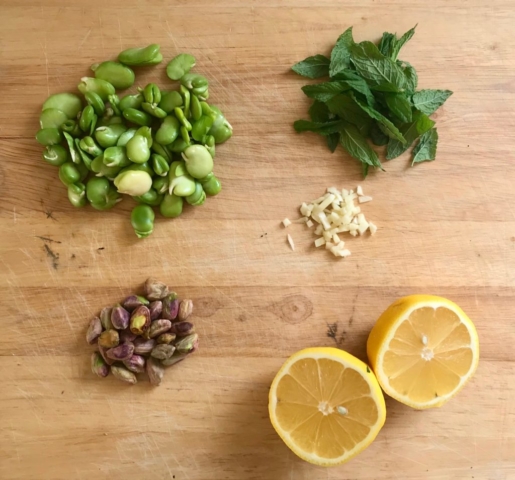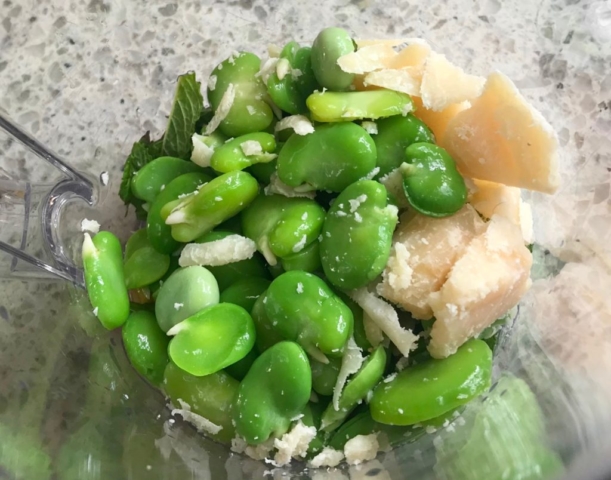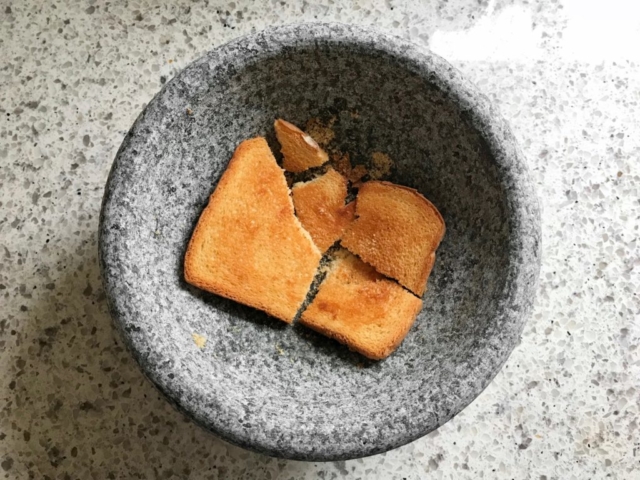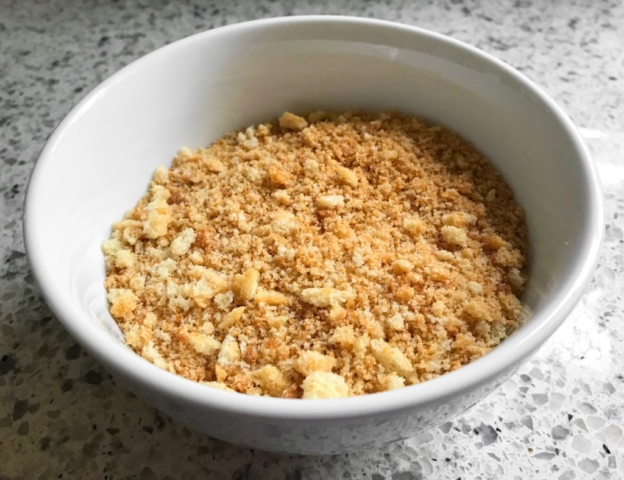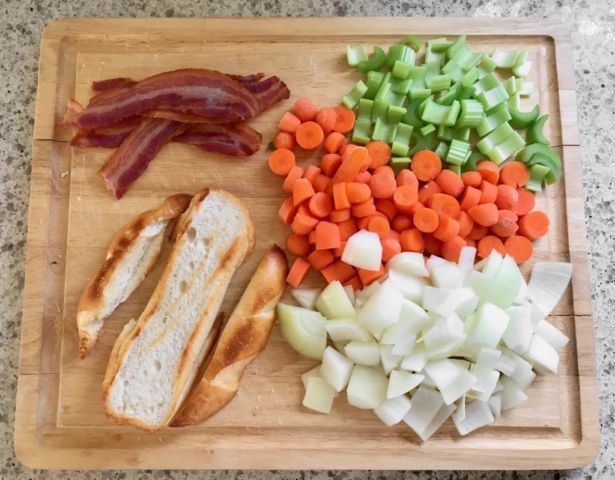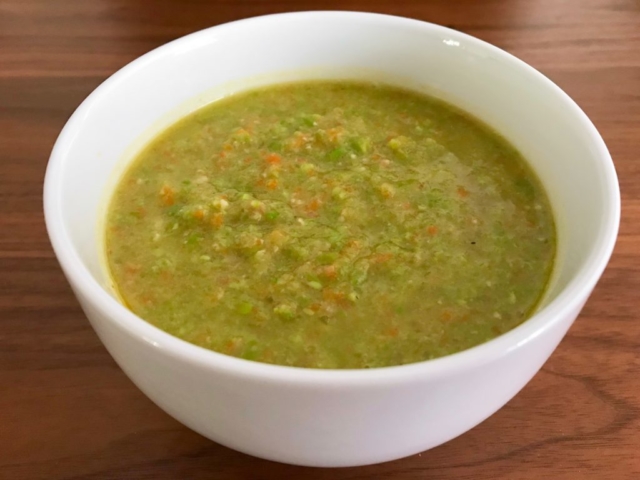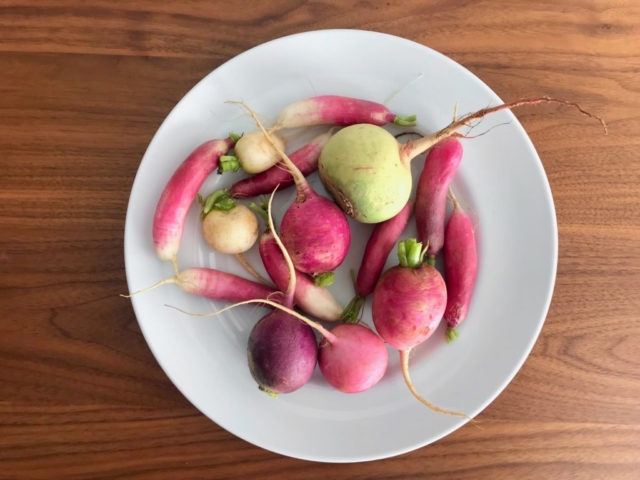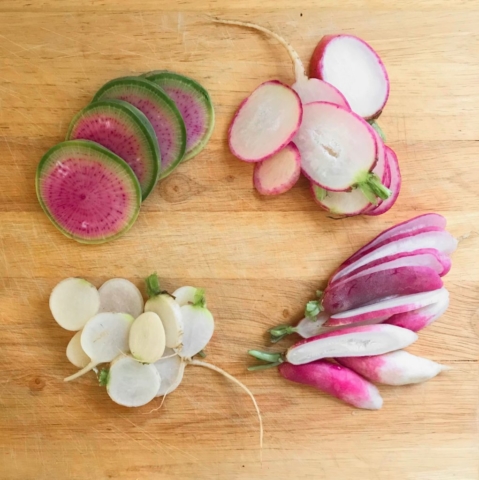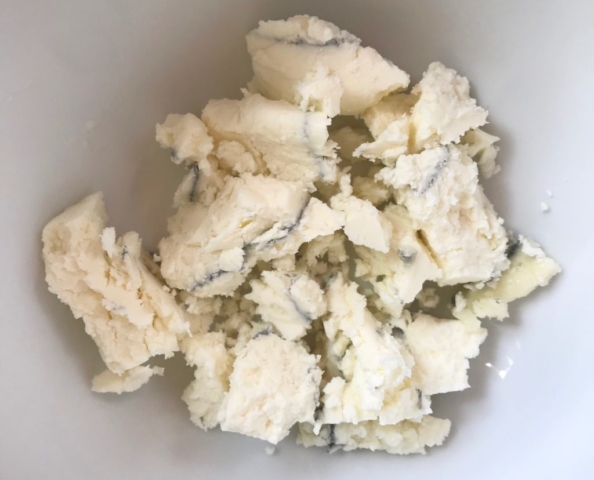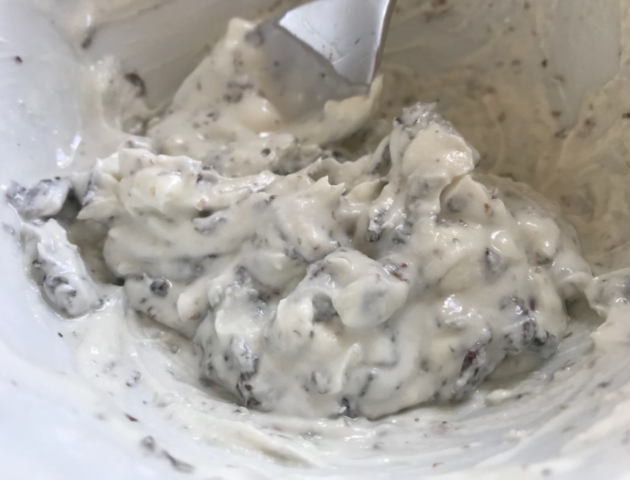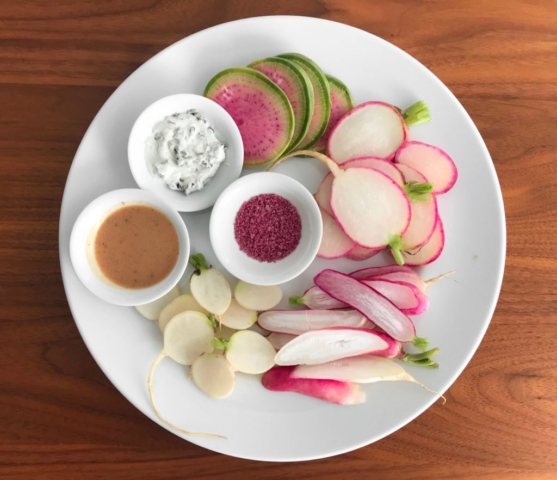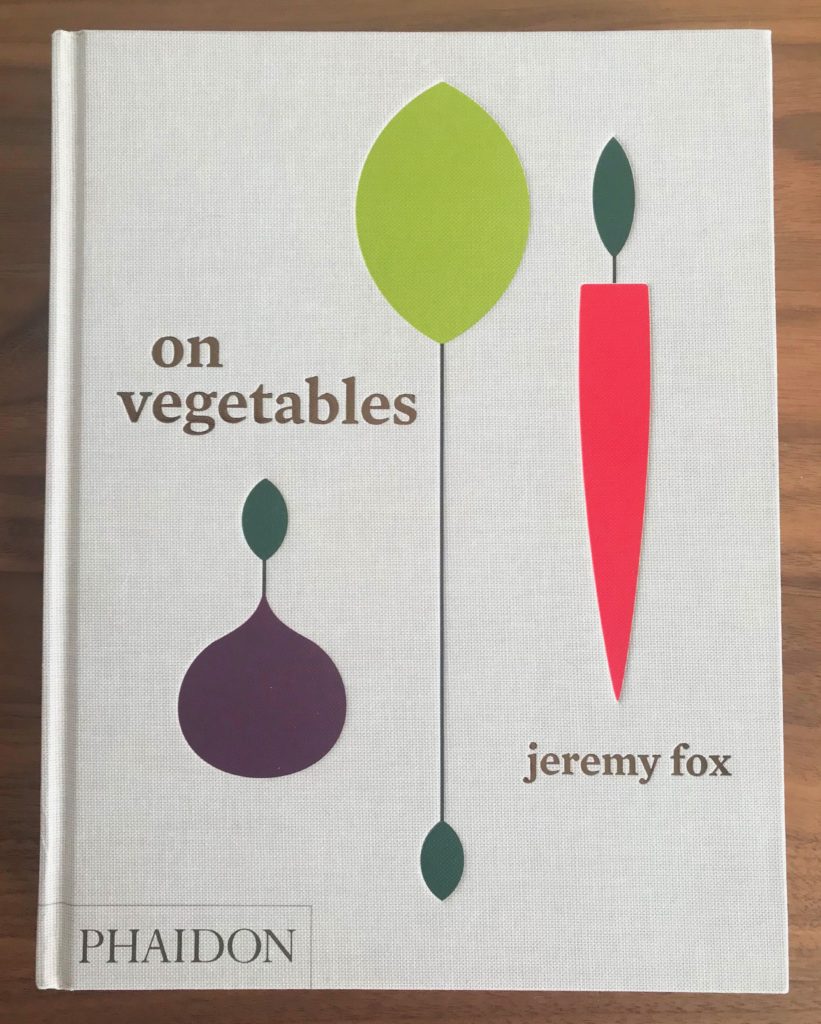
On Vegetables: Modern Recipes for the Home Kitchen
Jeremy Fox with Noah Galuten
Photographs by Rick Poon
2017
Received by request from my Hopewell family Secret Santa exchange
Recipes cooked: Charred whole broccoli with miso bagna cauda with modifications; smoked split pea shell and carrot soup with modifications; whole roasted young favas with their pesto and pistachio with modifications; radishes, goat cheese, nori, and mustard with (fist pump) no modifications!
Recipes I want to cook: Crosnes, brown butter, and sage; baby kiwi and burrata; stracciatella with morel mushrooms, ramps, and saffron
Difficulty to make: Hard
Difficulty to source: Medium
Fava bean pesto
Imagine eating these.
Cream of sunchoke soup with persimmon red-eye gravy, “layered with slow-cooked onions, mushrooms, and peppers, and fortified with coffee and cream.”
Carta da musica, leaves, “things,” and truffled pecorino, “probably my favorite dish on the menu,” “a vehicle for everything great that we happened to have on hand.”
Country-fried morel mushrooms with green garlic gravy, “a really rich, decadent dish, which gets brightened by the addition of green garlic.”
By now, you likely think, as I do, I want to eat everything in this cookbook. Did you even notice that all three dishes are vegetarian? If you did, do you really miss the meat? I don’t.
But.
“I am not a vegetarian,” opens one of the seven short chapters within the introduction by Chef Jeremy Fox, all essential to read. More on that later, though.
“What if cooking responsibly isn’t just about honoring things with heartbeats?” he suggests. “Throwing away food embarrasses me. It makes me feel like a hack chef just going through the motions. I don’t want to just cook nose-to-tail; I want to go seed-to-stalk, too. I want to cook the whole damn plant.”
In this spirit, you’ll find a recipe for carrot juice cavatelli with a salsa made from the carrot tops and dehydrated carrot pulp crumble. If you liked that writing style from the intro—I definitely do—then you’ll enjoy his inspiration for the pasta dish: “This dish accomplishes two things: First, it’s the purest example of using every single part of a vegetable in one single dish. And second—and what I was really trying to accomplish—the cavatelli look like that bright orange Kraft macaroni and cheese from a box.”
Similarly, the recipe for porcini mushrooms en papillote with a fondue made from the stems and any torn pieces is all at once resourceful, informative, and relatable: “Fun fact #1: I didn’t invent porcini en papillote. Fun fact #2: I made this dish as an audition for a job, and when I did it, I spilled butter all over someone’s rug. Fun fact #3: I still got the job. When purchasing porcini, look for ones that are dense and not spongy. If they’re wet and mushy, that often means that there are worms inside.”
Making breadcrumbs in the Jeremy Fox technique
This is a lovable cookbook. His signature Los Angeles restaurant, Rustic Canyon, is lovable, too—I had one of the better dining experiences of my life there. I took to his technique for making breadcrumbs with a mortar and pestle and won’t go back to the food processor. I also gleaned advice from two recipes for beautiful ramps and shiitakes and morels I picked up this week—I wanted to make a Japanese mushroom dashi soup with them but couldn’t bear to risk their overcooking, and his timings from his recipes for mushroom stock and the enticing stracciatella with morel mushrooms, ramps, and saffron were brilliant.
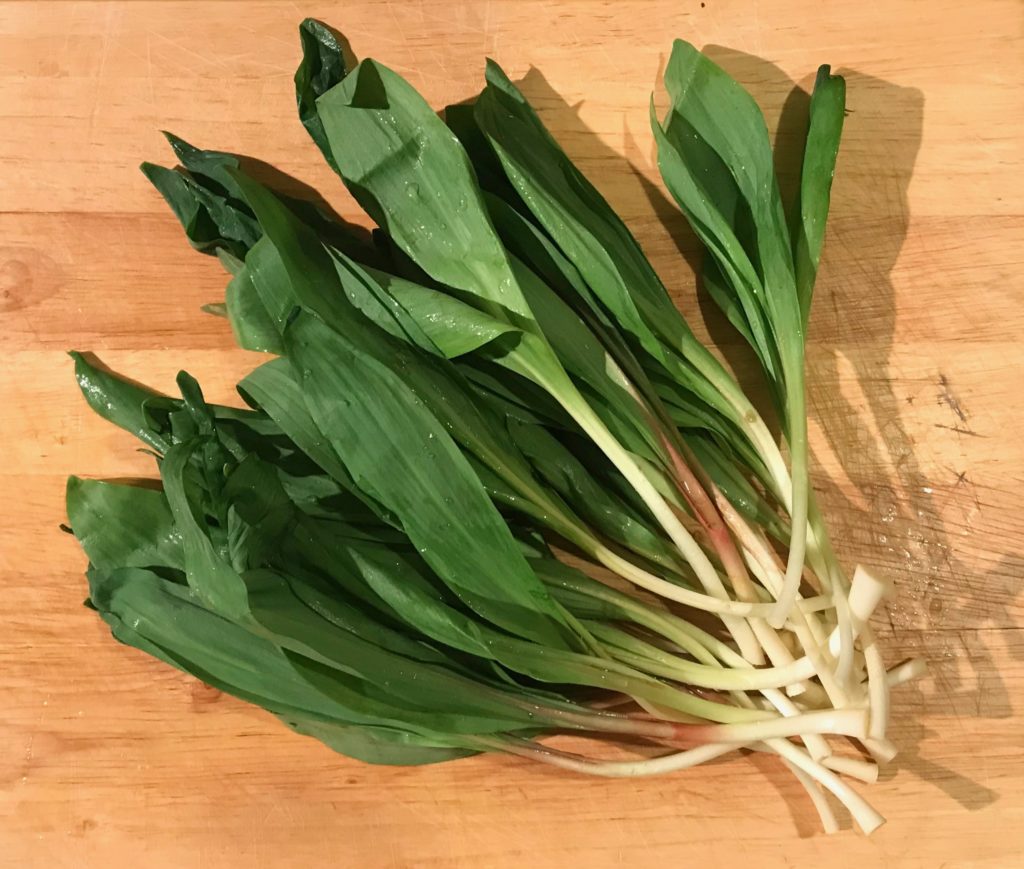 Ramps
Ramps
But, if you scare easily, put your hands over your ears and eyes and yell “la la la la la” to drown me out for thirty seconds. You’re going to need a Vitamix, a food dehydrator, a smoker, a coffee grinder
, a mandoline
, cheesecloth
, just so many pots and pans and bowls, a dictionary for words like “panade,” three days off from work, and a forager who probably makes most of his money leading ayahuasca ceremonies, to cook this cookbook.
The recipes aren’t listed upfront; they appear in alphabetical order by main ingredient whether they’re savory or sweet (like potatoes, then radishes, then rhubarb). Then, if you’re looking for the smoked split pea shell soup in the back index, for example, you won’t find it under “peas” with six similar recipes but instead under “pea pods.” Also under “pea pods,” a peach dessert recipe with no peas—but this is a pea sized error at worst, isn’t it?
You can look again! And sigh in relief, because the font and formatting choices are brilliantly authoritative, and the photography is gorgeous. If you’re a creative type, you can get so much inspiration.
I think you should own On Vegetables, and it’s not cheap (it’s Phaidon), so I mean it. Virgilio Martinez of Central and Mil in Peru shared at a book talk in Los Angeles this summer that people tell him all the time that his (also Phaidon) cookbooks are impossible to cook. He said, “I tell them, good.” I loved it. This is that kind of cookbook, and I’m so glad for it.
I tried nonetheless.
My version of his version of his grandmother’s version of pea soup
That smoked split pea shell soup is difficult, as most of us won’t have his outdoor smoker or restaurant-distributor access to English peas in their shells, let alone the time to shell the peas and make a stock from them. Instead, I pursued Fox’s description of his grandmother’s split pea and ham hock soup that he recalled from memory in crafting this recipe—a soup that’s smoky and thick with “a strong carrot taste” and “little bits of ham and croutons.” I didn’t want to look up a split pea and ham hock soup recipe online, I wanted to kind of do what he did when he made it vegetarian—improvise.
I always have a bag of organic frozen peas around, because I’m a home cook who moves through the kitchen with the grace of a toddler’s first attempt at throwing a paper airplane, so I often need a cheap improvised ice pack for burns and bruises that can adapt to the shape of a forearm in a way a non-pea ice pack cannot—and I also love peas—so I started with that. I incorporated bacon and caramelized onion and smoky paprika, and I cooked just so, so many carrots. The soup is actually a perfect breakfast, especially with a soft egg and his recipe for homemade breadcrumbs poured over it. If you’d like my recipe, I’m sorry. I really wish I wrote down what I did. I froze it in deli containers, leaving me to defrost it sparingly over the next several months, like opening good wine for special occasions. But it’s pea soup.
For the fava pesto, I was only supposed to put fava beans in my food processor, then mix that purée with finely chopped pistachios and mint and more; instead, I put everything that was supposed to be “finely chopped” into the food processor with the favas while I sipped (cheap) wine and watched. I loved it. It was really easy, and really good. I made a perfect lunch of it, spooning it over a salad with homemade pork, cilantro, and onion meatballs, and occasionally eating it by the spoonful, too.
Radishes, goat cheese and nori cream, mustard and red wine vinaigrette, and rose salt
I was a little confused by the recipe for radishes, goat cheese, nori, and mustard (really red wine vinegar and mustard dressing, another recipe from the book), because, well, here’s how I read a recipe:
Radishes: spicy, sharp, vegetal
Red wine vinegar: tart, sour, fruity
Dijon mustard: spicy, sharp, salty
Goat cheese: loamy, creamy, salty
Nori: oceanic, soggy, salty
Salt: salty, salty, salty
I couldn’t imagine it, so I had to make it, and with Humboldt Fog, no less. It wasn’t like a Caesar salad where the lettuce and anchovy and egg yolk and parm and black pepper are greater than the sum of their parts. It tasted exactly like itself, and here, “itself” is a really good thing. I ate it all, and I can remember the tastes vividly two weeks later. I could see it working at a restaurant in Reykjavik, alongside smoked puffin and fermented shark and boiled potatoes. (Iceland—actually very good at boiled potatoes.)
But why do I love this one quite so much? Because, I just do.
My favorite part is the introduction chapter titled “adulthood, accolades & anxiety.” Rereading it, I almost tear up—I challenge you to find me someone, anyone, who can’t relate to some aspect of Fox’s life—moving around as a kid, struggling with money, treating anxiety, what I call the “Royal Tenenbaums problem” of finding success too soon, or realizing that when you think everyone else is the problem the common denominator is you. (If you can’t relate to that last one, think harder on it.) The vulnerability it takes to write out what he did is really something. I read a lot of nonfiction. This has stuck with me. So like I said, read the whole introduction, because those six pages will make you care a lot about the rest of the pages that follow, and the chef who wrote them.
And the fava pesto is the best.

